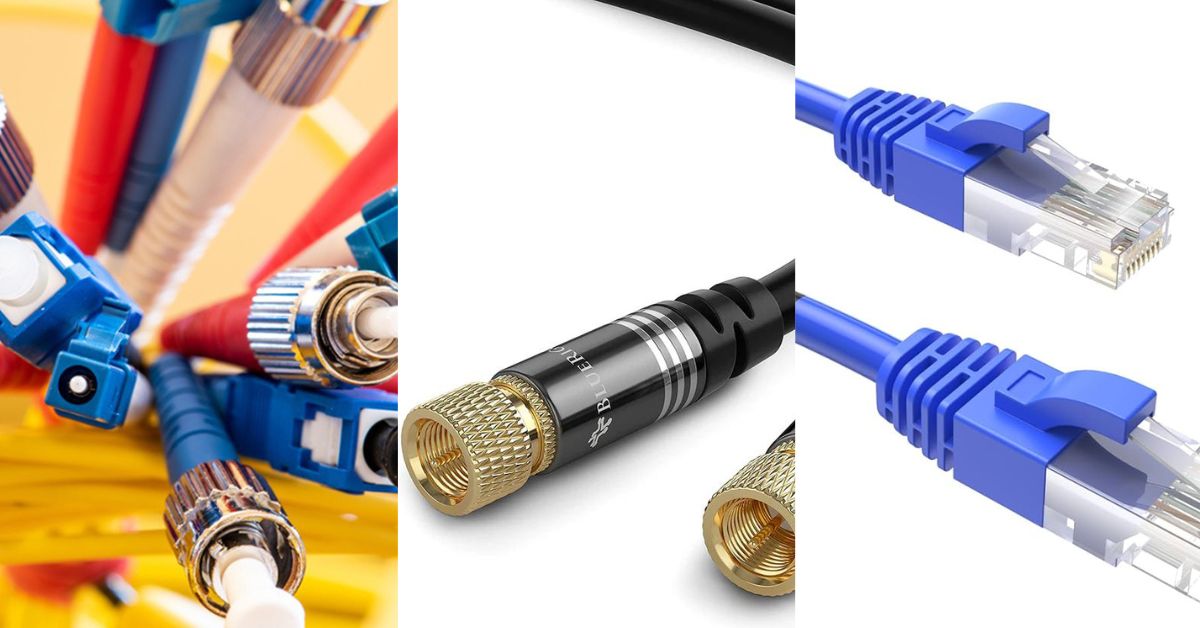This post contains affiliate links.
In the realm of digital connectivity, the type of cabling used plays a pivotal role in determining the efficiency and reliability of a network. With many options available, it’s crucial to understand which type of cable stands out as the most effective.
Fiber optic cabling is the most effective, offering high-speed data transmission and greater bandwidth with minimal interference. Its use of light for data transfer enables faster, more reliable communication over long distances, ideal for demanding network environments.
Fibre Optic, Ethernet, and Coaxial cables each offer unique benefits and applications. This article explores their advantages, drawbacks, and ideal use cases, helping you make an informed decision on the right cable type for your needs.
What are Fiber Optic Cables and Why Are They Most Effective?
Fiber optic cables are advanced communication lines that use glass or plastic fibers to transmit data as light, offering faster speeds and higher bandwidth than traditional cables. They are widely used in modern telecommunications, internet networking and high-speed data connections.
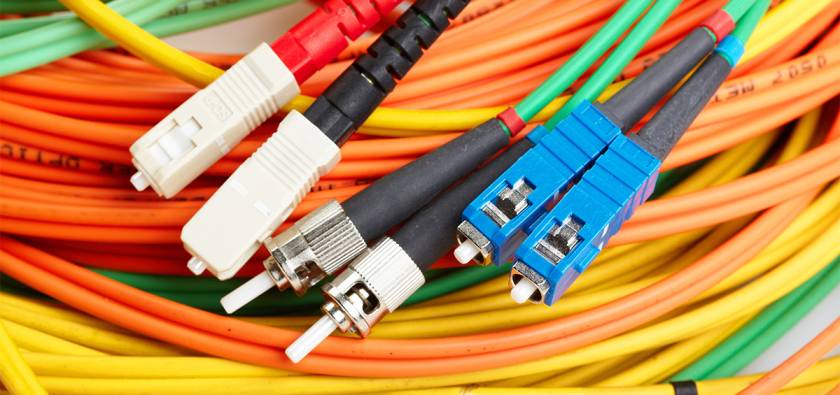
Key Advantages of Fiber Optic Cables
- Higher Bandwidth: Capable of carrying more data, with speeds up to 10 Gbps or higher.
- Resistance to Electromagnetic Interference: Unaffected by electronic noise, making them reliable in various environments.
- Durability: Less prone to damage and degradation, suitable for long-term use.
- Security: Fiber optics are more secure against data breaches, as they don’t radiate signals externally.
Ideal Scenarios for Fiber Optic Use
- Internet Backbones and Broadband Connections: Essential for high-speed internet services and modern telecommunications.
- Data Centers: Ideal for managing large volumes of data with high-speed requirements.
- Medical Imaging and Mechanical Inspections: Useful in transmitting high-resolution images from challenging locations.
- Undersea Communications: Used in undersea cables for intercontinental internet and telephone services, showcasing their robustness.
What are Ethernet Cables and Their Role in Networking?
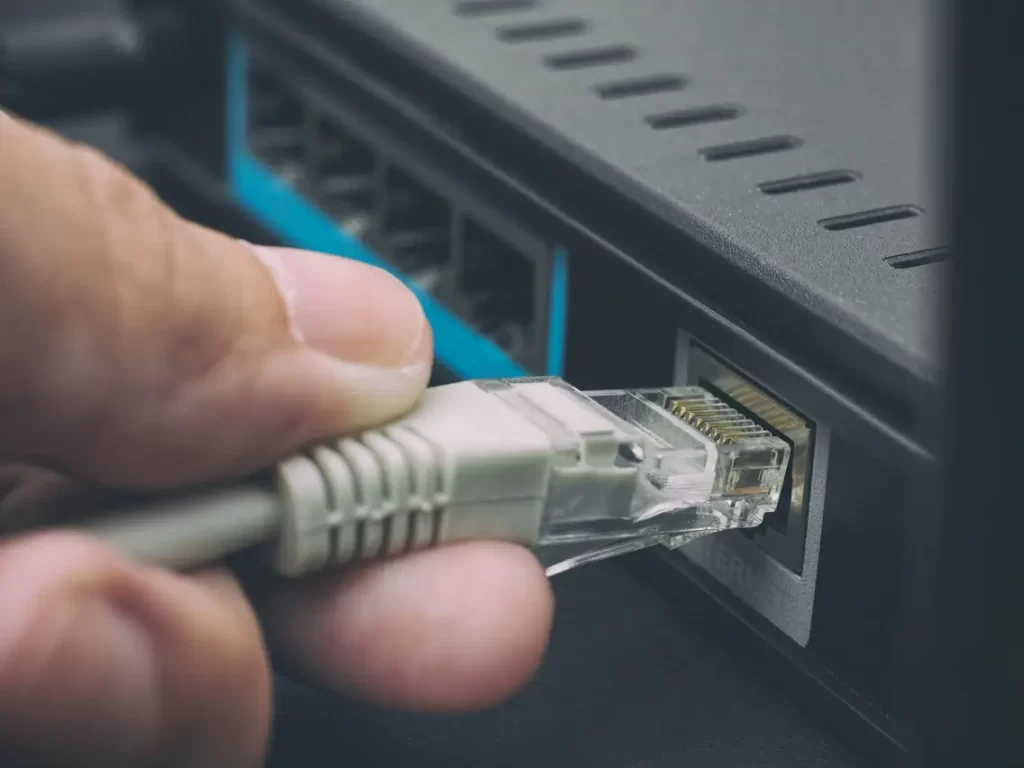
Ethernet cables are the lifeline of local area networks (LANs), commonly used to connect devices like computers, routers, and switches. They are a physical form of network cabling, which is crucial for setting up wired internet connections.
Breaking Down Ethernet Cable Categories
Ethernet cables come in various categories, each designed for specific network speeds and bandwidths. The most common types include:
- Cat5e: An enhanced version of Cat5, supports speeds up to 1 Gbps.
- Cat6: Offers transmission rate of up to 10 Gbps over short distances (up to 55 meters).
- Cat6a: An advancement of Cat6, supports 10 Gbps speeds over longer distances (up to 100 meters).
- Cat7: Designed for use in data centers, supports speeds up to 10 Gbps over 100 meters with a higher frequency range.
Each category is tailored for different network demands, balancing speed, distance, and cost.
Strengths and Weaknesses of Ethernet Cabling
Strengths:
- Reliability: Ethernet cables provide a stable and consistent connection, less susceptible to temporary disruptions compared to wireless networks.
- Speed: Especially in higher categories, they offer fast data transfer rates ideal for high-bandwidth applications.
- Security: Wired connections are generally more secure than wireless, as they are less prone to external interference and hacking.
Weaknesses:
- Mobility Limitation: Being physically tethered, they limit the mobility of connected devices.
- Installation Complexity: Running cables through walls and ceilings can be more complex and less aesthetically pleasing than setting up a wireless network.
- Scalability Issues: Expanding a network with more devices can require additional wiring and hardware.
Situations Best Suited for Ethernet Cables
Ethernet cables shine in environments where speed and reliability are non-negotiable. This includes:
- Office Networks: Where stable connections are needed for critical business operations.
- Gaming: Gamers often prefer Ethernet connections for lower latency and more consistent speeds.
- Streaming and Large File Transfers: Environments where high bandwidth and uninterrupted data transfer are crucial.
What are Coaxial Cables and Where Do They Fit In?
Coaxial cables, commonly referred to as coax cables, are a type of electrical cable that consists of a central conductor surrounded by an insulating layer, encased in a tubular conducting shield. This design provides a controlled environment for the signal and significantly reduces electromagnetic interference.
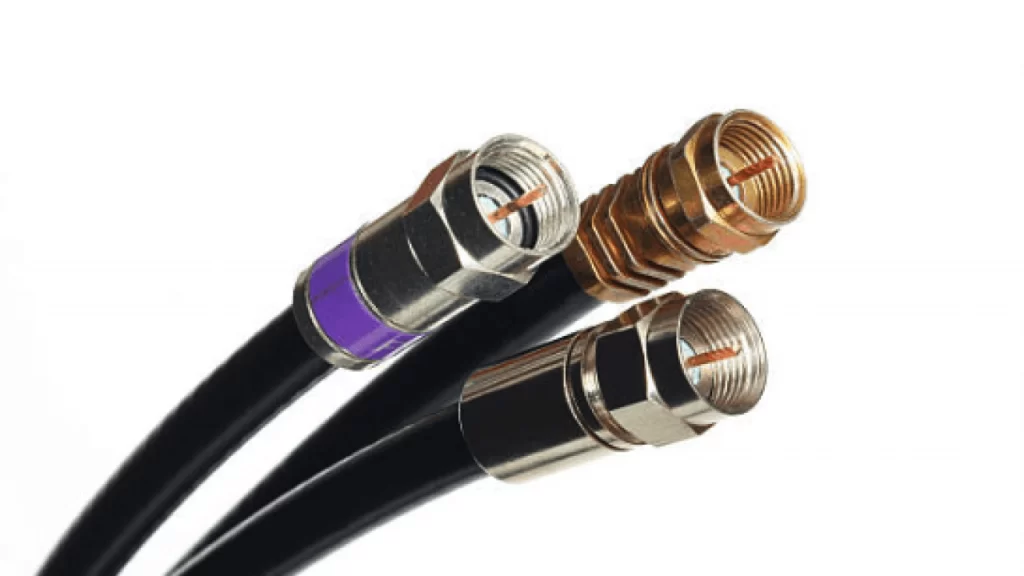
The Basics of Coaxial Cable Technology
The unique construction of coaxial cables allows them to transmit high-frequency electrical signals with minimal loss. The central conductor, usually made of copper, carries the signal, while the outer metallic shield helps to block any interference. This shield is crucial, especially in areas with a lot of electromagnetic noise. Between these two layers is an insulating material that keeps the signal intact and prevents the inner and outer layers from touching.
Pros and Cons of Coaxial Cabling
Pros:
- Durability: Coaxial cables are robust and less susceptible to damage from external factors.
- Resistance to Interference: The shielding in coaxial cables makes them excellent at resisting electromagnetic interference, ensuring a clearer signal.
- Cost-Effective: Generally, they are more affordable than fiber optic cables, making them a budget-friendly option for many applications.
Cons:
- Limited Bandwidth: Compared to fiber optics, coaxial cables offer lower bandwidth.
- Signal Loss Over Distance: While they are good at maintaining signal integrity, there is still some loss when used over long distances.
- Less Flexible: Due to their construction, they can be less flexible than other types of cables, which might be a consideration during installation.
Appropriate Uses for Coaxial Cables
Coaxial cables are particularly well-suited for certain applications, including:
- Cable Television: They have been the backbone of cable TV networks for decades, efficiently transmitting high-quality audio and video signals.
- Internet Service: Many broadband internet connections use coaxial cables, especially in residential areas.
- Closed-Circuit Television (CCTV): Their ability to transmit high-frequency signals makes them ideal for security camera systems.
Comparing Cable Types: Fiber Optic vs. Ethernet vs. Coaxial
Whether it’s for your home, office, or a large-scale data center, the choice of cabling can significantly impact performance. With options like Fiber Optic, Ethernet, and Coaxial cables available, each offering unique benefits and limitations, it’s crucial to understand how they compare.
This comprehensive comparison aims to provide you with the knowledge to choose the right cable type for your specific needs.
| Feature | Fiber Optic Cables | Ethernet Cables | Coaxial Cables |
| Speed | Up to 100 Gbps or more | Up to 10 Gbps (Cat6/6a/7) | Up to 1 Gbps |
| Bandwidth | Extremely high (terabytes per second potential) | High (dependent on category) | Moderate |
| Performance in Long Distances | Excellent (minimal loss over long distances) | Good (up to 100 meters for optimal performance) | Moderate (signal loss over long distances) |
| Durability | High (resistant to environmental factors) | Moderate (susceptible to physical damage) | High (robust construction) |
| Susceptibility to Interference | Very low (immune to electromagnetic interference) | Low (shielded versions available) | Low (good shielding against interference) |
| Installation Complexity | High (requires professional installation and equipment) | Moderate (DIY possible, easier to route) | Moderate (DIY possible, but less flexible) |
| Cost | High (more expensive materials and installation) | Moderate (varies with category) | Low (generally more affordable) |
Key Takeaways:
- Fiber Optic Cables: Best for high-speed and high-bandwidth applications, ideal for long-distance communication, but come at a higher cost and complexity in installation.
- Ethernet Cables: A versatile choice for various network speeds and distances, offering a balance between performance and cost, suitable for home and office networks.
- Coaxial Cables: Reliable for moderate speed and bandwidth needs, excellent in environments with high electromagnetic interference, and cost-effective for certain applications like cable TV and internet.
Choosing the Right Cable for Your Home Office Setup
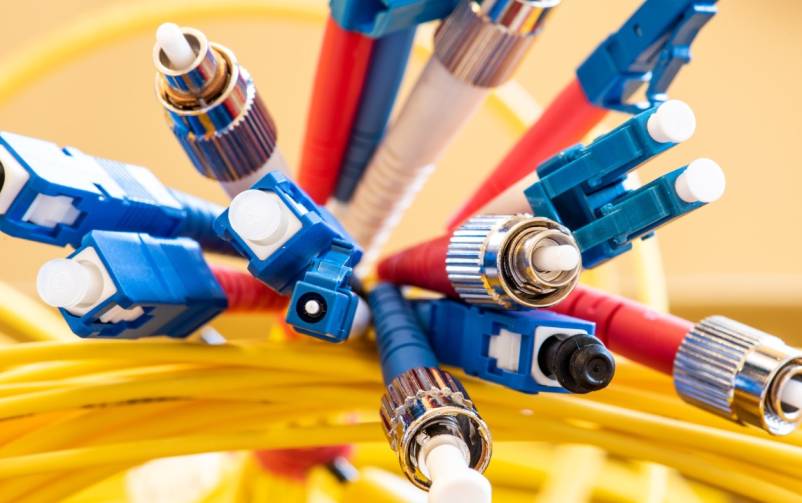
With so many options, how do you choose the right cable to ensure a fast, reliable internet connection? Here’s a breakdown of different cable types and their suitability for various home office setups:
1. Fiber Optic Cables
- Best for: High-demand home offices with extensive data needs.
- Ideal Use Cases:
- Professionals who require ultra-fast internet speeds for tasks like video conferencing, large file transfers, or running a home server.
- Remote workers in tech, design, or media production, where bandwidth and speed are critical.
- Advantages: Exceptionally high-speed internet, reliable for heavy usage, minimal latency.
- Considerations: Higher installation cost; not available in all areas.
2. Ethernet Cables (Cat5e, Cat6, Cat6a, Cat7)
- Best for: Standard home office setups.
- Ideal Use Cases:
- Everyday professional tasks like email, document editing, and online research.
- Stable connection for video calls and online meetings.
- Home offices where Wi-Fi is weak or unreliable.
- Advantages: Reliable and stable connection, better security than Wi-Fi, relatively easy to install.
- Considerations: Physical limitations in mobility; installation may require running cables through walls.
3. Coaxial Cables
- Best for: Home offices with basic internet needs and cable internet service.
- Ideal Use Cases:
- General web browsing, email communication, and standard definition video streaming.
- Home offices in areas where fiber optic or high-speed Ethernet isn’t available.
- Advantages: Widely available, relatively inexpensive, and easy to install.
- Considerations: Lower bandwidth and speed compared to fiber optic and high-end Ethernet cables.
Additional Tips for Home Office Cable Setup
- Assess Your Needs: Consider the nature of your work and the level of internet demand it entails.
- Plan for the Future: If you anticipate your internet needs increasing, opt for a more advanced cable type.
- Professional Installation: For complex setups, especially with fiber optic cables, consider professional installation.
- Cable Management: Regardless of the type, ensure proper cable management for a tidy and efficient workspace.
By selecting the appropriate cable type for your specific home office needs, you can ensure a smooth, productive remote working experience.
Wrap Up
Choosing the right cable is more than just a technical decision; it’s about optimizing your entire digital experience. Whether it’s for home use, an office network, or industrial applications, the type of cable you choose can make or break your setup.
Fiber optic cables are the way to go for those needing top-tier speed, reliability, and security. They might be a bit more expensive upfront, but the long-term benefit of fiber cable often justifies the initial cost.

